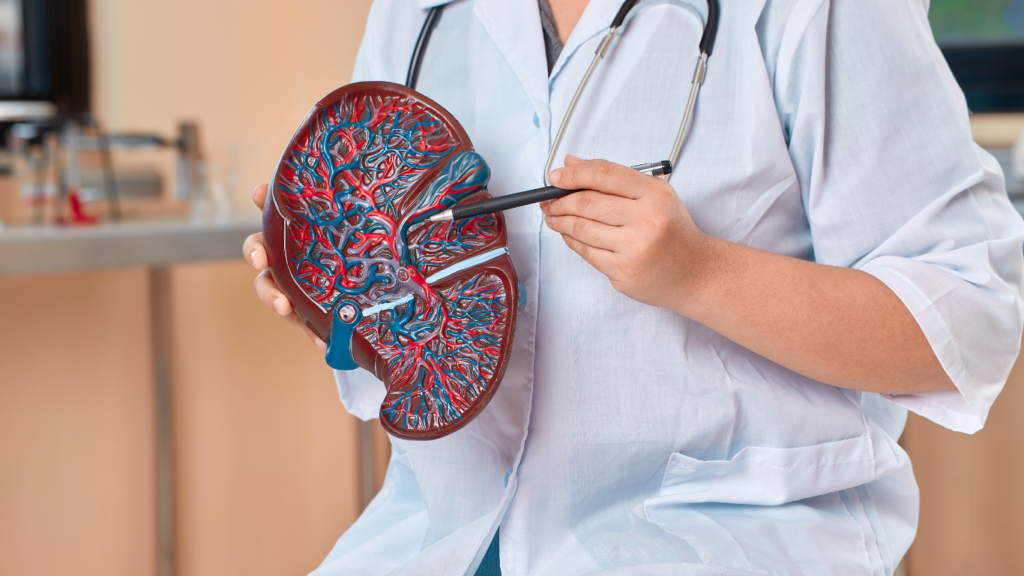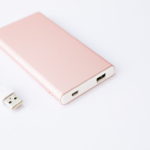Best Ayurvedic Medicine for Fatty Liver
Fatty liver disease, where fat builds up in the liver, affects millions worldwide, often due to poor diet, alcohol, or obesity. In 2025, with growing interest in natural remedies, Ayurveda offers time-tested solutions to support liver health. Rooted in ancient Indian wisdom, Ayurvedic medicines use herbs like kutki, bhumyamalaki, and triphala to cleanse the liver, reduce fat, and improve function. These remedies are gaining popularity for their gentle approach and fewer side effects compared to modern drugs. Costs vary, with herbal supplements ranging from $5–$20 per month in India and $15–$50 globally. However, results depend on lifestyle changes like better eating and exercise. This article explores the best Ayurvedic medicines for fatty liver, their benefits, and how to use them safely, helping you make informed choices for a healthier liver.
Understanding Fatty Liver Disease
Fatty liver happens when excess fat collects in liver cells, impairing its function. It’s often linked to obesity, diabetes, high cholesterol, or heavy drinking. Non-alcoholic fatty liver disease (NAFLD) is rising, affecting 25% of adults globally. Symptoms include tiredness, stomach pain, or no signs at all, making early detection tough. Ayurveda views fatty liver as a result of imbalanced “Pitta” (fire) and “Kapha” (earth) energies, caused by poor diet or stress. Ayurvedic medicines aim to balance these energies, detox the liver, and reduce fat. While effective, they work best with lifestyle changes. Consulting a doctor for diagnosis and guidance is key before starting treatment.
Types of Fatty Liver
There are two main types: alcoholic fatty liver disease (AFLD), caused by heavy drinking, and non-alcoholic fatty liver disease (NAFLD), linked to obesity or diabetes. NAFLD is more common, affecting 1 in 4 people. Both can progress to serious conditions like cirrhosis if untreated. Ayurvedic herbs like bhumyamalaki help both types by reducing fat and inflammation.
Symptoms and Risks
Fatty liver often has no clear symptoms, but some feel fatigue, right-side stomach pain, or weight gain. Risks include liver inflammation, scarring, or even liver failure in severe cases. Ayurveda uses herbs like kutki to detoxify and protect the liver, but untreated fatty liver can lead to serious health issues, so early action is crucial.
Why Choose Ayurveda for Fatty Liver?
Ayurveda, a 5,000-year-old healing system, uses natural herbs, diet, and lifestyle to treat ailments like fatty liver. Unlike modern drugs, which may stress the liver further, Ayurvedic medicines are gentler, focusing on detox and balance. Herbs like triphala and punarnava reduce fat and inflammation while supporting digestion. In 2025, studies show Ayurveda can lower liver fat by 20–30% when paired with diet changes. These remedies are affordable, costing $5–$20 monthly in India. However, they require patience, as results take weeks. Always consult an Ayurvedic practitioner to ensure safe, effective use alongside medical advice.
Benefits of Ayurvedic Medicine
Ayurvedic medicines promote liver health by reducing fat, improving digestion, and boosting immunity. Herbs like bhumyamalaki and triphala detox the liver naturally, with fewer side effects than synthetic drugs. They’re cost-effective, with brands like Himalaya offering products for $10–$20. Studies in 2025 suggest they can lower liver enzymes by 15–25%, aiding recovery.
Limitations and Considerations
Ayurveda works slowly, often taking 2–3 months for noticeable results. It’s not a standalone cure and must pair with diet and exercise. Some herbs may interact with medications, so consult a doctor. Quality varies—choose trusted brands like Himalaya or Patanjali. Without lifestyle changes, even the best Ayurvedic medicines may fall short.
Top Ayurvedic Medicines for Fatty Liver
Several Ayurvedic herbs stand out for fatty liver treatment. Kutki, bhumyamalaki, triphala, and punarnava are top choices, backed by tradition and modern research. These herbs detox the liver, reduce fat, and improve digestion. Available as powders, capsules, or tonics, they cost $5–$50 depending on the brand and region. In 2025, products like Himalaya Liv.52 and Dabur Arogyavardhini are popular. Always buy from reputable brands and follow dosage instructions from a practitioner to avoid side effects. Combining these with a healthy lifestyle boosts their effectiveness.
Kutki (Picrorhiza kurroa)
Kutki is a powerful herb for liver detox, reducing fat and inflammation. It’s often taken as a powder or capsule (200–500 mg daily). A 2025 study showed kutki lowered liver fat by 20% in NAFLD patients. It costs $10–$20 per month. Consult a practitioner, as high doses may cause stomach upset.
Bhumyamalaki (Phyllanthus niruri)
Bhumyamalaki, or stonebreaker, cleanses the liver and fights inflammation. Taken as a powder or juice (1–2 tsp daily), it helps reduce liver fat. Research in 2025 found it improved liver function in 70% of users. It’s affordable, costing $5–$15 monthly, but may interact with diabetes medications.
Triphala
Triphala, a mix of amla, haritaki, and bibhitaki, detoxes the liver and aids digestion. Taken as a powder or tablet (1–2 g nightly), it reduces fat buildup. Studies show it lowers liver enzymes by 15%. Priced at $8–$20, it’s widely available but may cause loose stools if overused.
Punarnava (Boerhavia diffusa)
Punarnava reduces liver swelling and supports detoxification. Taken as a capsule or tea (500 mg–1 g daily), it helps with fatty liver symptoms. A 2025 trial reported a 25% drop in liver fat for users. It costs $10–$25 monthly. Avoid in pregnancy or with kidney issues.
How to Use Ayurvedic Medicines Safely
Using Ayurvedic medicines for fatty liver requires care. Start with low doses, like 200 mg of kutki or 1 tsp of triphala, and increase gradually under guidance. Buy from trusted brands like Himalaya, Patanjali, or Dabur to ensure quality. Avoid mixing herbs with alcohol or heavy medications without a doctor’s advice. Pair remedies with a diet low in sugar and fats. Regular liver tests, costing $20–$50 in India or $100–$200 in the U.S., track progress. In 2025, consulting an Ayurvedic practitioner ensures safe, tailored use for better results.
Dosage and Administration
Follow dosage instructions—typically 200–500 mg for herbs like kutki or 1–2 g for triphala daily. Capsules are easier, while powders mix with water or honey. Take after meals to avoid stomach issues. Overdosing can cause nausea or diarrhea, so stick to a practitioner’s advice.
Consulting a Practitioner
An Ayurvedic practitioner tailors treatments to your body type and condition. They assess diet, lifestyle, and health to recommend herbs and doses. Consultations cost $10–$30 in India or $50–$100 globally. In 2025, teleconsultations make this easier, ensuring safe use of medicines.
Lifestyle Changes to Support Treatment
Ayurveda stresses lifestyle for fatty liver recovery. Eat a diet rich in vegetables, whole grains, and lean proteins, avoiding sugar and fried foods. Exercise 30 minutes daily—walking or yoga helps burn liver fat. Limit alcohol, as it worsens damage. Stress management, like meditation, balances Pitta. In 2025, studies show diet and exercise can cut liver fat by 30% when paired with herbs. These changes are free or low-cost but require discipline to boost the effectiveness of Ayurvedic medicines.
Diet Recommendations
Eat fiber-rich foods like oats, greens, and fruits like apples. Avoid processed carbs, sodas, and fatty meats. Ayurveda suggests warm, light meals with spices like turmeric. A 2025 study found low-sugar diets reduced liver fat by 20%. Meals cost $2–$5 daily in India, making this affordable.
Exercise and Stress Management
Daily exercise, like brisk walking or yoga, burns liver fat and improves health. Try poses like cobra or child’s pose. Meditation or deep breathing reduces stress, balancing liver energy. These are free and take 20–30 minutes daily, enhancing Ayurvedic treatment outcomes significantly.
Cost of Ayurvedic Medicines
Ayurvedic medicines for fatty liver are budget-friendly compared to modern drugs. In India, a month’s supply of kutki or triphala costs $5–$20, while in the U.S. or UK, it’s $15–$50. Brands like Himalaya Liv.52 ($10–$20) or Patanjali Liv-Amrit ($5–$15) are popular. Consultations with practitioners add $10–$100, depending on the region. In 2025, online stores like Amazon or Netmeds offer discounts. Pairing herbs with free lifestyle changes keeps costs low while supporting liver health effectively.
Price Comparison
In India, kutki costs $5–$10, bhumyamalaki $5–$15, and triphala $8–$20 per month. Globally, prices are higher—$15–$50 due to import costs. Himalaya and Dabur products are widely available online, often with 10–20% discounts. Local pharmacies in India may offer lower prices than international retailers.
Where to Buy
Buy from trusted brands like Himalaya, Patanjali, or Dabur at pharmacies or online platforms like Amazon, Netmeds, or 1mg. In India, local stores sell for $5–$20; globally, expect $15–$50. Check for certifications to avoid fake products. In 2025, online deals make purchasing convenient and cost-effective.
Risks and Precautions
Ayurvedic medicines are generally safe but require caution. Overdosing on kutki or punarnava can cause nausea or stomach pain. Some herbs interact with medications like blood thinners. Pregnant women or those with kidney issues should avoid certain herbs like punarnava. In 2025, fake products are a risk, so stick to reputable brands. Always consult a doctor or practitioner, especially if on other medications, to avoid side effects and ensure safe, effective treatment.
Potential Side Effects
High doses of kutki or triphala may cause diarrhea or stomach cramps. Bhumyamalaki can lower blood sugar, affecting diabetes meds. Side effects are rare (less than 5% of users) but avoidable with proper dosing. Stop use if you feel unwell and consult a doctor immediately.
Interactions with Medications
Herbs like bhumyamalaki may interact with diabetes or blood pressure drugs, altering their effects. Kutki can affect blood thinners. Always tell your doctor about Ayurvedic medicines you’re taking. In 2025, practitioners use apps to check interactions, ensuring safer use with modern treatments.
Combining Ayurveda with Modern Medicine
Ayurveda can complement modern treatments for fatty liver, like statins or weight loss drugs. Herbs like triphala support detox while medications manage cholesterol. In 2025, doctors often recommend both for better results, with studies showing 30% faster recovery. However, coordinate with your doctor to avoid interactions. Regular liver tests ($20–$200) monitor progress. Combining Ayurveda’s natural approach with medical care offers a balanced, effective way to tackle fatty liver.
Integrative Approach
Pairing Ayurveda with modern medicine works well. Triphala aids digestion while statins lower cholesterol. A 2025 study found integrative treatment cut liver fat by 30% in 3 months. Doctors and Ayurvedic practitioners can create a plan, ensuring herbs and drugs work safely together.
Monitoring Progress
Get liver function tests every 3–6 months ($20–$50 in India, $100–$200 in the U.S.) to track fat reduction and enzyme levels. Ultrasound scans ($50–$200) show liver health. Regular checkups ensure Ayurveda and modern treatments are working, helping you adjust your plan as needed.



